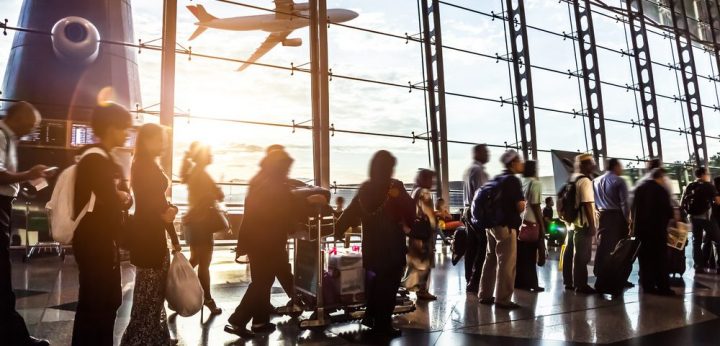Tips for Traveling by Airplane with Sickle Cell

In my previous column, I shared my suggestions on the preparations you should consider before taking a trip with sickle cell.
The environment inside an airplane is not ideal for our bodies. On a flight, we are subjected to extended periods of reduced oxygen levels, tight spaces, and cold temperatures. So how can we reduce the risk of getting a crisis while flying by air?
Here are my tips for preparing for a flight:
- Dress appropriately: Avoid wearing tight-fitting clothing. Garments that are loose and won’t restrict blood flow are ideal. Air conditioning can make the cabin uncomfortably cool, so bring a sweater and warm socks. I’ve learned that you can’t go wrong with a tracksuit.
- Bring water bottles: Security restrictions prohibit passengers from taking containers holding over 3.4 ounces of liquid on board. But there are no rules about carrying empty bottles. Once I’m comfortably seated, I ask an airline attendant to fill my hot water bottle — this helps to keep me warm and provide pain relief. I drink warm water, so I also request that my drinking water bottle is filled with hot water. That way, I feel warm inside and out.
- Carry medicine: No matter where I go, I carry painkillers in my bag. I’m at increased risk of falling ill when traveling, and if I’m feeling unwell, I don’t want to have to wait for my medications at baggage claim. Make sure you have your medications on your person, and don’t forget to pack your prescriptions or other relevant documents in case airport security staff question you.
- Keep moving: Sitting still for extended periods increases everyone’s risk of developing blood clots. And because a sickle cell crisis occurs as the result of a blood clot, you must try to reduce that possibility when flying. You can do this by moving throughout the flight: stretch your legs, get up from your seat, and walk up and down the aisle every hour or so. If possible, book an aisle seat so you don’t bother the passengers sitting next to you.
- Tell staff: Make at least one member of the flight crew aware of your condition so that they will know what to do if you need assistance. If they’re informed in advance, they’ll be prepared to respond if you have a crisis, avoiding unnecessary panic.
***
Note: Sickle Cell Anemia News is strictly a news and information website about the disease. It does not provide medical advice, diagnosis, or treatment. This content is not intended to be a substitute for professional medical advice, diagnosis, or treatment. Always seek the advice of your physician or other qualified health provider with any questions you may have regarding a medical condition. Never disregard professional medical advice or delay in seeking it because of something you have read on this website. The opinions expressed in this column are not those of Sickle Cell Anemia News or its parent company, Bionews Services, and are intended to spark discussion about issues pertaining to sickle cell anemia.







Comments
Miss Lady
Great tips! Compression socks are also great for a long flight.
Most peoples legs and feet tend to swell during air travel because of inactivity during a flight. Sitting with feet on the floor for a long period causes blood to pool in the leg veins. This is especially not good for sickle cell patients because our blood is prone to clotting. So, I wear compression socks to increase circulation and to prevent blood from pooling or clotting in the legs.
Robbie
Thank you for the tips! My wife and I are taking a long flight to Hawaii in October for our anniversary. About 7 years ago she had a bad crisis after flying and we were stuck in the hospital for many days. She is a little nervous about this trip now, but I think she’ll be ok and it’s good to take precautions. She has taken several other plane trips without any problems, so we’re hoping for the best.
Alan Aplin
I have sickle cell trait and twice I have fainted on long haul flights. Being given oxygen by stewards has helped me recover.
C
Great tips. I fainted on a 5 hour flight. I suggest
Dress in loose layers
Drink water
Get the aisle seat
Please get up and stretch those legs every hour
When you are feeling short of breath and nausea means you are about to faint. Immediately let person next to you know or flight attendant. I stood up for blood flow and took in as much oxygen as possible slowly to recover but it wasn’t enough. The good thing was once a fell someone saw me and they knew I had an issue. If I would have stayed seated then they would have thought I was sleeping and I would have been lacking more oxygen. It’s kind of scary because I live abroad now and I have to travel back to the states twice within the next 9 months. Stay safe and get up out that seat.